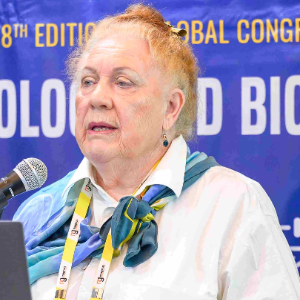Plant Abiotic Stress
Plants are complex organisms and are prone to abiotic stress. The detrimental impact of non-living forces on living organisms in a specific environment is known as abiotic stress. Drought, salinity, low or high temperatures, and other environmental extremes are the leading causes of poor plant development and lower crop yields around the world. Because of climate change and the destruction of the environment caused by human activity, abiotic stress has become a major threat to food security. Abiotic stress causes plants to undergo a variety of molecular, cellular, and physiological changes in order to respond and adapt to the situation. A better understanding of how plants respond to abiotic stress may help breeders improve stress tolerance in both traditional and modern breeding applications.
- Plant sensing
- Plant signalling
- Response to stress
- Abiotic stress

Mohammad Babadoost
University of Illinois, United States
Srinivasa Rao Mentreddy
Alabama A&M University, United States
Mary Cole
The University of Melbourne, Australia
Satya S S Narina
Virginia State University, United States
Sara Hailemariam
Purdue University, United States
Carla Cao
Universidad de Murcia, Spain


Title : Exploring the genetic diversity in tannin-rich forages to explain the large intra species variability in tannin content
Selina Sterup Moore, Aarhus University, Denmark
Title : Isolation and functional properties of biomolecules of plants and its application
Balagopalan Unni, GEMS Arts & Science College (Autonomous), India
Title : Primed for the future: PGPR and the promise of sustainable, heritable crop resilience
Prashant Singh, Banaras Hindu University (BHU), India
Title : Revealing allelic variations in candidate genes associated with grain yield under salinity stress between two contrasting rice genotypes
Nisha Sulari Kottearachchi, Wayamba University of Sri Lanka, Sri Lanka
Title : Adaptive strategies of Aristida L. species across ecological zones of Pakistan: Linking soil characteristics with morphological and physiological traits
Iram Ijaz, University of Agriculture Faisalabad Pakistan, Pakistan
Title : Ethnobotanical survey and abundance of weeds in selected Manihot esculenta (cassava) Crantz farms in Osun state, Nigeria
Dada Caleb Mayokun, University of Ibadan, Nigeria